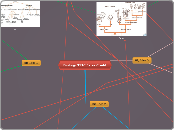作者:John Flores 13 年以前
1103
Biology 311C Extra Credit

作者:John Flores 13 年以前
1103

更多类似内容
Eubacteria
Protists
Animals
This concept map starts off by focusing on the big picture, and then progressivly narrowing it down to cells, the basic units of life. I started off by detailing the Domains, and from the domains to the kingdoms. Then I switched gears and showed how the cells that make up these kingdoms get their energey, and finally I finish with what makes each organism unique. In Big Idea 1, I touched on the differences between the three domains and the different kingdoms of organisms. Big Idea 2 focuses on the processes that power the cells that make up the organisms. Finally, Big Idea 3 compares the different processes and genetic make up of these organisms
The Animalia Kingdom is further divided into mammals, fish, birds, insects, and etc.
Fungi
Plants
Despite Fungi being its own Kingdom, it is often included in the Plant Kingdom.
Bacteria are the most widespread and diverse prokaryotes and are now classified into multiple kingdoms. Each rod-shaped structure showed in the picture is a bacteria cell.
Cellulaqr Structure: DNA Cytoplasm Cell Wall Ribosomes
The Eukaryotes span a wide variety of kingdoms and all of them have different characteristics, features, and habitats. Featured in the picture are Protists, Animals, Plants Fungi.
Cellular Structure: All eukaryotic cells have nucleus DNA plasma membrane Ribosomes Cytoplasm/cytoskeleton Most eukaryotic cells also have other membrane-bound internal structures called organelles. Mitochondria Golgi bodies Lysosomes Endoplasmic reticulum Vesicles There are a few major differences between animal, plant, fungal, and protistan cells, and guess what? Here they are: All plant cells have cell wall made of cellulose central vacuole Chloroplasts Some animal and protistan cells have Flagella Cilia All animal cells have Centrioles All fungal cells have cell wall made of chitin.
Archaea are single celled, and lack organelles. They can live in a braod range of habitats. Each cell above is one Archaea cell.
Cellular Structure: DNA-Genetic Information Cell Membrane-Inner fluid Cell Wall-Outter Protective Membrane
Glycolysis occurs in the cytosol and the Krebs cycle takes place in the matrix of the mitochondria. Oxidative phosphorylation(electon transport chain) is carried out in the inner mitochondrial membrane. If no oxygen is present, respiration occurs by glycolysis and fermentation. Both occur in the cytosol.
No Oxygen Fermentation makes it possible for ATP to be continually produced in the absence of oxygen. By oxidizing the NADH produced in glycolysis, fermentation regenerates NAD+, which can take part in glycolysis once again to produce more ATP. Significantly less ATP is formed, however.
With Oxygen In glycolysis, glucose(6 carbon) is broken down into two molecules of a 3-carbon molecule called pyruvate. This change is accompanied by a net gain of 2 ATP molecules and 2 NADH molecules. Pyruvate is transported into the mitochondria and loses carbon dioxide to form acetyl-CoA. When acetyl-CoA is oxidized to carbon dioxide in the Krebs cycle, chemical energy is released in the form of NADH, FADH2, and ATP. The electron transport chain allows the release of the large amount of chemical energy stored in reduced NAD+ (NADH) and reduced FAD (FADH2). The energy released is captured in the form of ATP (3 ATP per NADH and 2 ATP per FADH2). Around 38 ATPs are formed.
While the intial part of glycolysis occurs outside of the mitochondria, it is still important in the production of ATP. The Krebs cycle occurs in the Matrix of the mitochondria. The Electron Transport Chain occurs in an inner part of the mitochondria called the Crista.
The chlorophyll absorbs the sunlight that is used. The Electron Transport Chains, photosynthetic light-capturing systems, and ATP synthase are all contained in the thylakoid membrane. The Calvin cycle occurs in the stroma of chloroplasts.
Phenotype are the visible genes that are expressed
Genotype is the assortment of genes an organism posseses.
Transcription and translation are spatially and temporally separated in eukaryotic cells; that is, transcription occurs in the nucleus to produce a pre-mRNA molecule. The pre-mRNA is typically processed to produce the mature mRNA, which exits the nucleus and is translated in the cytoplasm. Introns must be cut out before the mRNA can be functional. This occurs in the cytoplasm.
Translation
Transcription
Because there is no nucleus to separate the processes of transcription and translation, when bacterial genes are transcribed, their transcripts can immediately be translated. Unlike Eukaryotic cells, Prokaryotic cells don't need to go through the pre-mRNA phase. Transcription and Translation are coupled here.